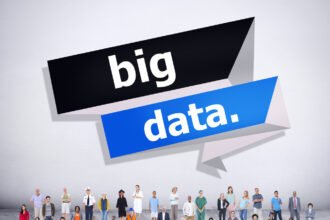The following is a joint guest post by Umbel’s web engineer Ben Papillon and front-end web developer Amelia Watternberger on their thoughts after the 2014 OpenVis Conference in Boston.
The following is a joint guest post by Umbel’s web engineer Ben Papillon and front-end web developer Amelia Watternberger on their thoughts after the 2014 OpenVis Conference in Boston.
The investor Paul Graham has a well-known article called “Cities and Ambition,” in which he describes Cambridge, MA, the site of the 2014 OpenVis Conference, as the “intellectual capital of the world,” a city which, more than any other, values the genesis and exchange of new ideas: “What I like about Boston (or rather Cambridge) is that the message there is: you should be smarter. You really should get around to reading all those books you’ve been meaning to.”
The city’s academic bent and interdisciplinary focus was appropriately reflected in the tone of this year’s OpenVis conference, whose speakers applied data visualization principles and tools to applications ranging from designing interactive textbooks to processing massive inflows of social data for display on a wall-sized, multi-monitor touch screen panel.
This type of data visualization is a young community, which should work together to structure its growth. Many of the talks at OpenVis focused on open source projects used by the data visualization community, such as Javascript frameworks like Backbone.js, Ember.js, and Angular.js, and Python tools like the IPython Notebook or the Pattern web mining module. Overall, there was an emphasis on increasing the modularity and reusability of these tools and their components so tools and code can more easily be shared between projects and environments.
Data Visualization in the Modern Age
With all the industry buzz surrounding data visualization and its current toolset, it can sometimes be easy to forget that the practice extends at least as far back as that of map-making. All maps attempt to convey complex data through a graphical medium, using design elements to influence, and hopefully expedite, the reader’s understanding. While such design challenges have presented themselves for centuries, it been over the past few years that new technology and formats have expanded the scope and ubiquity of data visualization on the web.
Javascript libraries such as D3.js have made it easier and more standardized than ever to create rich, interactive data graphics for the web, and users have come to expect a higher than ever level of engagement, creativity and interactivity. As a result, the power to set the conversation, in many cases, has shifted into the hands of data scientists and data journalists. Kennedy Elliott, a visual journalist from the Washington Post, said during her OpenVis talk that, for those working in data visualization, “It’s a really good time to start thinking out of the box.”
It’s true that there is a rapidly materializing landscape for data visualization best practices and conventions, both in terms of tools and techniques and in terms of how to responsibly and accurately convey information. One theme that came up often at the conference was the dichotomy between “exploratory” infographics and “explanatory” ones. Many of the speakers (such as Jen Christiansen, Kennedy Elliot, Lisa Strausfeld, and Christopher Cannon) come from media fields, and visualize smaller, pre-determined data sets that serve the purpose of clarifying a specific trend or point. Others (such as Facebook’s Jason Sundram and Mapbox’s Eric Fischer) visualize dynamic data of unpredictable scale and meaning, thus inviting the user to reach her own conclusions via exploration.
Ee’re focusing on ways to empower clients to explore their data in meaningful and unbiased ways. Our clients’ data is so variable and unpredictable, and each use case so unique, that we make sure to think outside the box to create the best possible visual tools. The goal here is to help our clients connect the dots between audience affinities and onsite behavior, and oftentimes the best way to do this is by providing an intuitive, visual platform that they can customize to suit their own purposes.
“All big data has to become small data to be visualized” – @jsundram #openvisconf
— Irene Ros (@ireneros) April 25, 2014
In the final presentation of the conference, about full stack data visualization at Facebook, Jason Sundram pointed out that, “All big data has to become small data to be visualized.” At Umbel, we strive to accomplish this with our visual tools.






